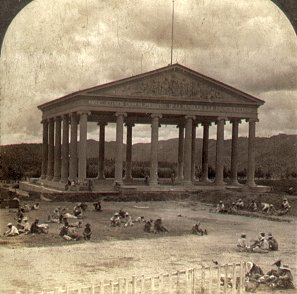Manuel Estrada Cabrera
|
|
Manuel José Estrada Cabrera (November 21, 1857 – September 24, 1923) was President of Guatemala from 8 February, 1898 to 15 April, 1920.
Manuel Estrada Cabrera took the presidency after the assassination of José María Reina Barrios. He brought stability to Guatemala at the price of often dictatorial rule. He encouraged development of the nation's infrastructure of highways, railroads, and sea ports. The United Fruit Company became an important force in Guatemala during his presidency.
In 1906 Cabrera faced serious revolts against his rule; the rebels were supported by the governments of most of the other Central American nations, but Cabrera succeeded in putting them down, in part with the help of Mexico's Porfirio Diaz. Estrada Cabrera continued in power until forced to resign by new revolts in 1920.
Estrada Cabrera's most curious legacy was his attempt to foster a Cult of Minerva in Guatemala. He ordered a number of Hellenic style "Temples of Minerva" built in major cities of the country.

Cabrera's Temple of Minerva, Guatemala City, c. 1905
The architrave is inscribed:
MANUEL ESTRADA CABERA PRESIDENTE DE LA REPUBLICA A LA JUVENTUD ESTUDIOSA
("Manuel Estrada Cabera, President of the Republic, to the Studious Youths")
This structure was later destroyed by an earthquake, but similar Temples in Quetzaltenango and other cities still stand.
See also: History of Guatemala
| Preceded by: José María Reina Barrios |
Presidents of Guatemala | Succeeded by: Carlos Herrera y Luna |
